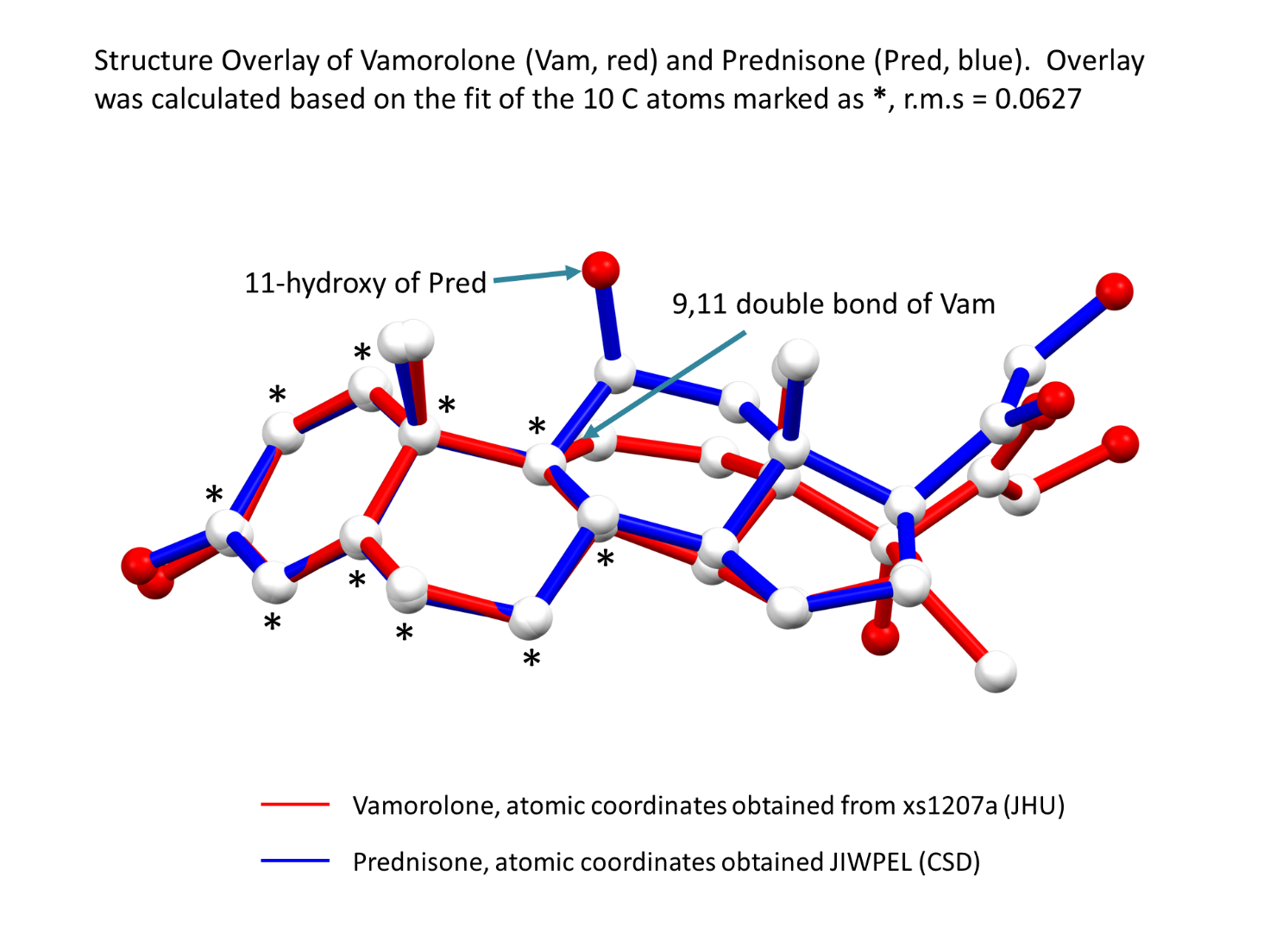Vamorolone, (also known as VBP15) is a ‘dissociative steroid’. This means that it retains sub activities associated with efficacy (trans repression, physicochemical membrane effects, synchronisation of tissue remodelling), and dissociates these efficacy-sub activities from other sub activities more associated with harmful side effect profiles (transactivation sub activity). Vamorolone has received Orphan Drug Designation in the US and Europe and is being developed for chronic treatment of boys with Duchenne Muscular Dystrophy (DMD).

Based on the characterization and optimization of vamorolone for transactivation, transrepression and physicochemical membrane properties, ReveraGen Biopharma undertook the testing for safety and efficacy in animal models. Toxicity, pharmacokinetics, pharmacodynamics, and ADME studies (absorption, distribution, metabolism and excretion) have been conducted. Results have demonstrated that most short-term (acute) properties of vamorolone were similar to traditional glucocorticoids.
Multiple studies were conducted using the mdx mouse model of Duchenne muscular dystrophy (a mouse lacking dystrophin in muscle, similar to Duchenne muscular dystrophy patients).Vamorolone consistently showed improvements in muscle function that were similar to or superior to prednisone. A loss of side effects was also seen, including loss of growth stunting, loss of heart fibrosis and loss of immunosuppressive effects.
Phase 1 clinical trials were completed in late 2015 in healthy adult volunteers (SAD and MAD).
–Single Ascending Dose (SAD) 0.1, 0.3, 1.0, 3.0, 8.0, 8.0 fed, 20.0 mg/kg vamorolone
- Excellent dose proportionality, little variation between subjects, short half life (2-4 hours).
–Multiple Ascending Dose (MAD) 1.0, 3.0, 9.0, 20.0 mg/kg/day 2 weeks.
- No drug accumulation (PK for Day 1 identical to Day 14), Vamorolone safe at highest dose tested.
For more information visit www.reveragen.com
